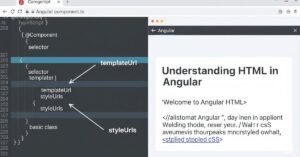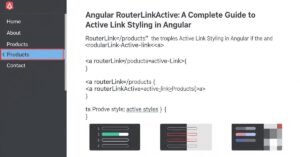What is Domain Angular? Angular (pronounced ‘dohm’) is the name for the Angular framework which is commonly used as the main language of most Angular applications. It’s the basic hierarchical container which define how the app will be rendered, and how its elements will be arranged in terms of the hierarchy within the container.
The first thing we need to do to start using Angular is to install it. This can be done by going to the Angular website, clicking on the install option, and following the on screen instructions to install Angular. Once installed, there are two things you need to learn about Angular: the directives and the template. The directives are what we will be learning more about in this article. They are the codes that are used to create the actual objects or the code that is being interpreted by the Angular compiler.
The directive is a very important aspect of Angular, since they are the means through which Angular interprets the objects that are passed as parameters to the elements. The more elements that pass the directives the more Angular interprets them and the more defined they become.
When creating directives you want to keep in mind that Angular takes a little while to load and render everything. Since Angular uses the CommonJS specification, it doesn’t really matter if the elements are created in the browser or in a server-side script. In both cases Angular will take some time to download and then run the script.
Some of the different directives you can create in Angular are: , , ng-if and ng-class. These are the most common in Angular. You should definitely familiarize yourself with them before starting to use Angular.Another important part of Angular is the templates. Templates are the HTML code that is used to construct the visual aspects of your pages. The templates allow you to define the various objects, elements and events of your Angular application, as well as the CSS styles.When using Angular, the most popular syntax for creating templates is ES6. {ES6 syntax. This enables the developers to create Angular templates without any HTML code, allowing them to use more advanced Angular syntax. The other syntaxes you can use to include are Angular 1 and Typescript syntax, both of which are relatively easy to learn.Angular templates are used for a lot more than just creating Angular applications but are also used for a lot of things else. You may be wondering what Angular does in other areas besides applications, but one thing to know about Angular is that it’s an extremely versatile framework which allows you to develop just about anything you want to.For instance, when writing Angular applications you have the option of creating a router. You can do this by simply binding the components to specific URLs. As you would expect, the router is responsible for routing the user to your site in a different way than the normal application.The other interesting part of Angular is its support for custom elements. You can write and implement custom directives for all kinds of different objects that are not possible in the standard Angular framework.In order to use these custom elements you need to have a custom HTML template to make it work. The most popular Angular custom element is the Ng-View. Ng-View is used to display an HTML snippet inside the component, which is typically a directive.These custom elements are especially useful for creating animations and dynamic features. The reason why you need a custom element is that it will let you use regular HTML syntax as well as JavaScript. to create your content. Custom elements are also great for integrating with HTML templates and Angular templates, because it gives you the freedom to create your own elements that you know you can use later on.




